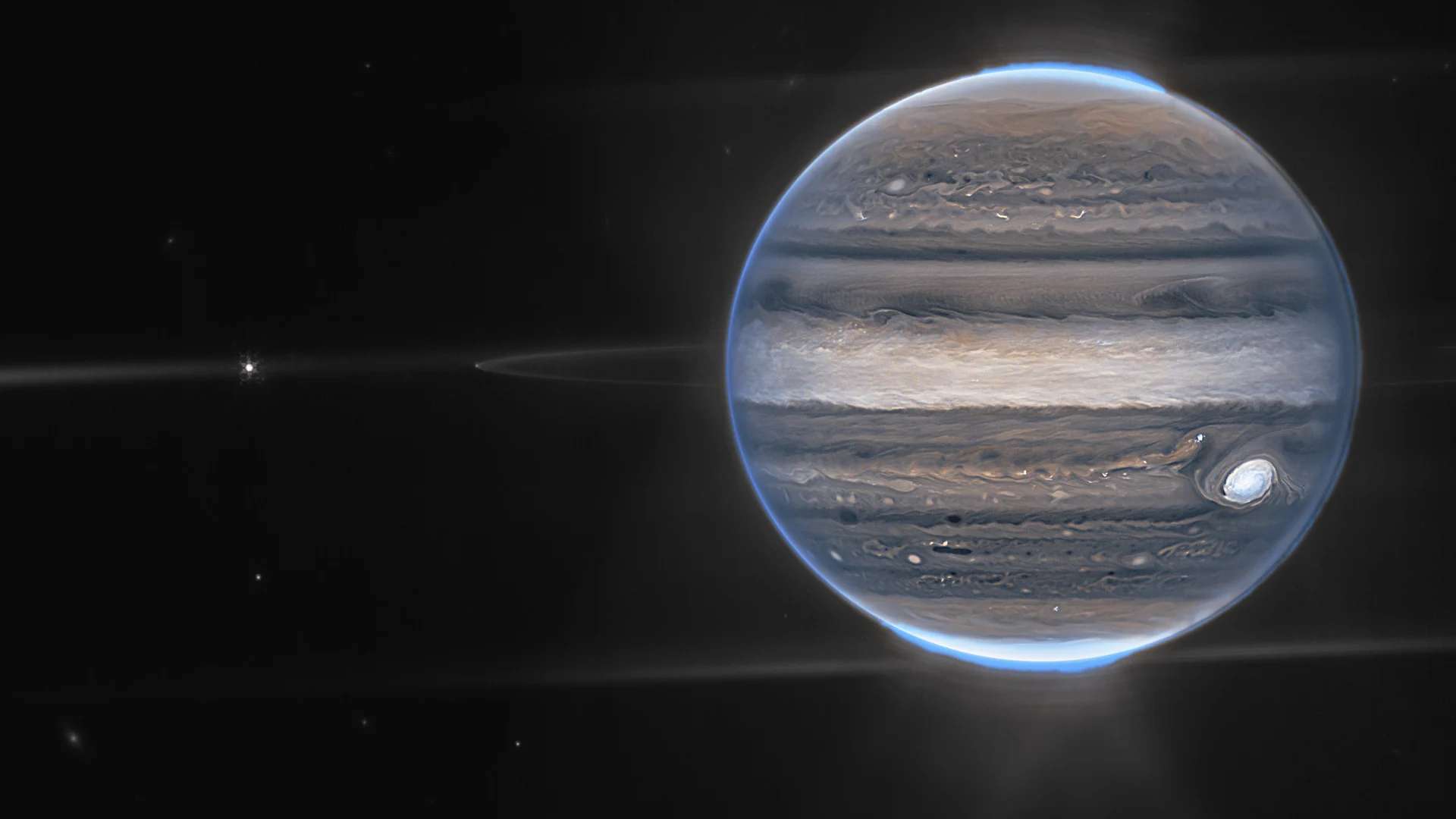
Jupiter takes the lead on Saturn with 92 confirmed moons
A combination of "re-found" and "newfound" moons has advanced Jupiter's tally to the largest of any planet in the solar system, for now.
Astronomers confirmed that Jupiter once again reigns as king, with 92 confirmed moons.
Having moons is something of a 'fashionable trend' in the solar system. Of all the major planets, only the inner two — Mercury and Venus — have none (they may consider themselves hot enough without them). Earth gets by with one (plus an occasional temporary moon), Mars has a small pair that it likely picked up from the edge of the asteroid belt. However, it's the outer solar system where things get really interesting. Uranus has collected 27 that we know about, while Neptune has 14 that we can see from here. Even tiny Pluto and Charon — our system's unofficial binary planet — have amassed a small assortment of their own.
It's Jupiter and Saturn that truly dominate here, though. A rivalry between the two largest planets in our solar system has been quietly going on for decades.
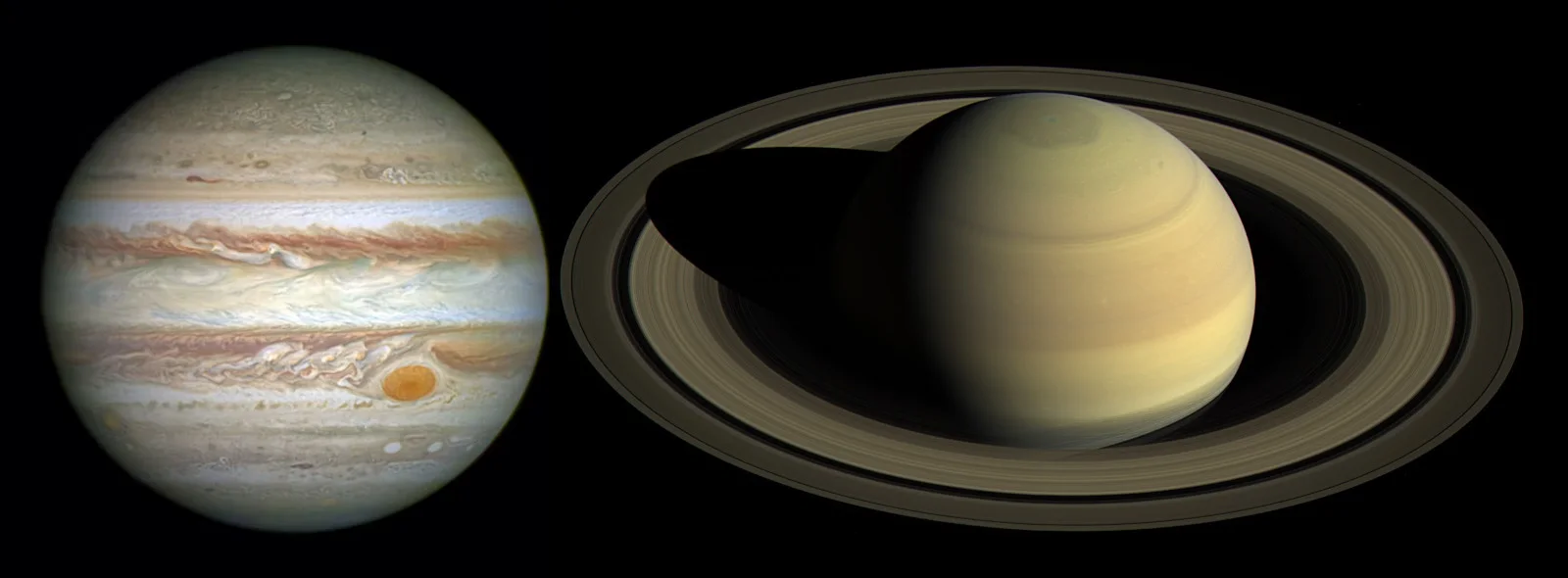
This composite image shows Jupiter via the Hubble Space Telescope, alongside Saturn as seen by the Cassini spacecraft. Jupiter credits: NASA, ESA, A. Simon (Goddard Space Flight Center). Saturn credits: NASA/JPL-Caltech/Space Science Institute
The earliest observations, from the 1600s to the 1800s, turned up five around Jupiter — Io, Europa, Ganymede, Callisto, and Amalthea — and the nine brightest of Saturn's moons — Titan, Tethys, Dione, Rhea, Iapetus, Mimas, Enceladus, Hyperion and Phoebe. During the 20th century, telescopes and spacecraft increased Jupiter's roster to 27 while doubling Saturn's total to 18.
Then, in the 21st century, dedicated surveys showed us just how much we'd been missing. By 2018, a total of 79 moons had been spotted around Jupiter. The following year, Saturn surpassed its rival with a total of 82. In 2021, amateur astronomer Kai Ly added enough observations to confirm an 80th moon first spotted around Jupiter in 2003. However, Saturn still retained the title, and an 83rd moon was also added to its tally around the same time.
Now, based on observations over the past two years, Jupiter has retaken the mantle with a total of 92 moons!
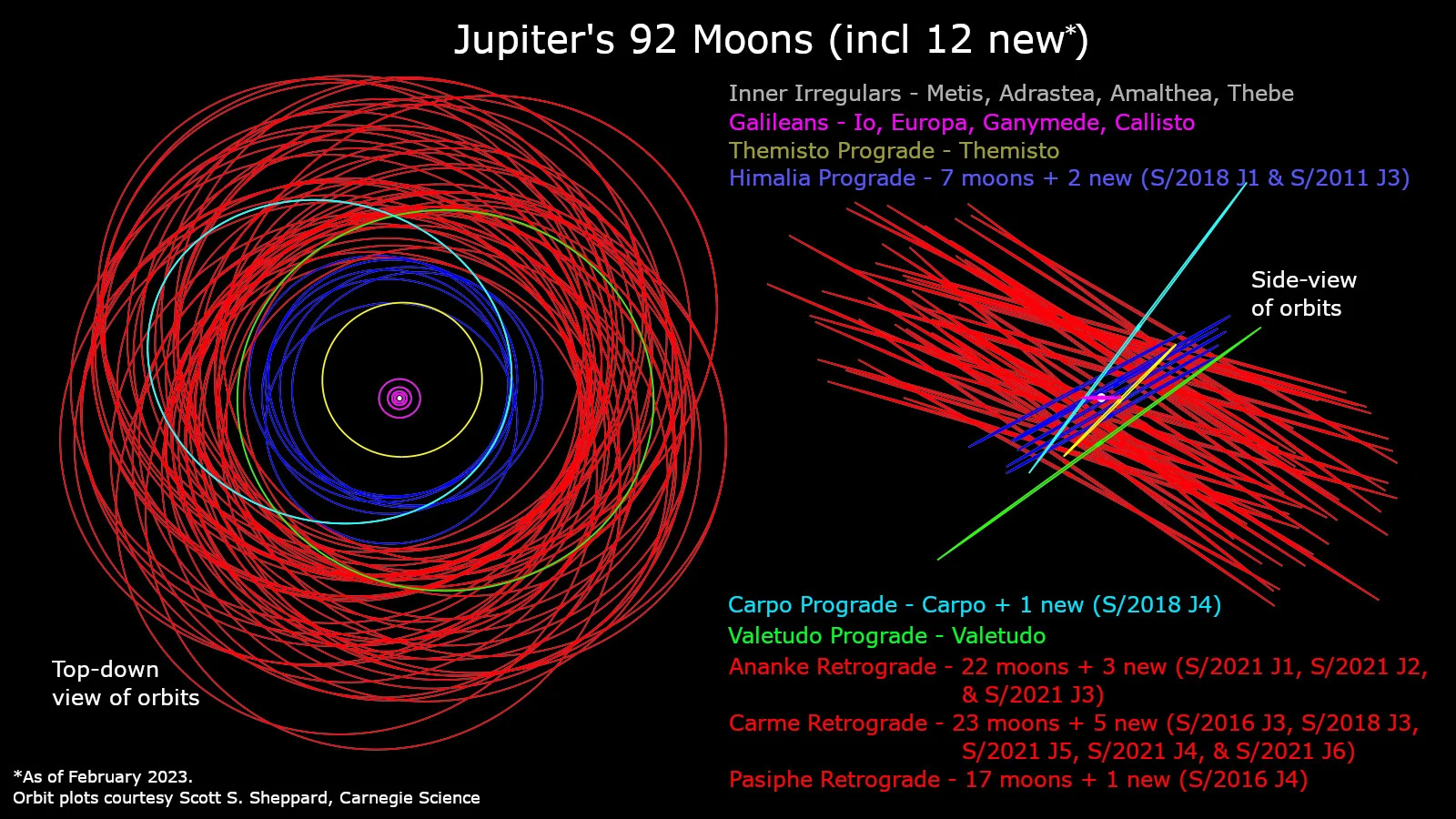
This diagram shows the top-down and side views of Jupiter's collection of moons, with the various groups separated by colour (inner irregulars in gray, Galileans in pink, Themisto in yellow, Himalia in blue, Carpo in light blue, Valetudo in green, and the retrogrades in red). The orbits of the 12 newly-confirmed moons are not shown but are included in the listing. Credit: Scott S. Shepard/Carnegie Science, labels by Scott Sutherland
The 12 as-of-yet unnamed satellites include five newly discovered ones and seven that were first seen in previous observation campaigns and were then confirmed by this latest survey.
All range from 1 to 3 kilometres in diameter and are scattered among the various 'groups' of Jovian moons. Two are in the Himalia group (S/2018 J1 and S/2011 J3), while one joins Carpo (S/2018 J4), with these three having highly tilted orbits in the 'prograde' direction (in the same direction as Jupiter's rotation).
Three more were found among the Ananke group (S/2021 J1, S/2021 J2, and S/2021 J3), five in the Carme group (S/2016 J3, S/2018 J3, S/2021 J4, S/2021 J5, and S/2021 J6), and one in the Pasiphe group (S/2016 J4), all of which have retrograde orbits (opposite to the direction of Jupiter's rotation).
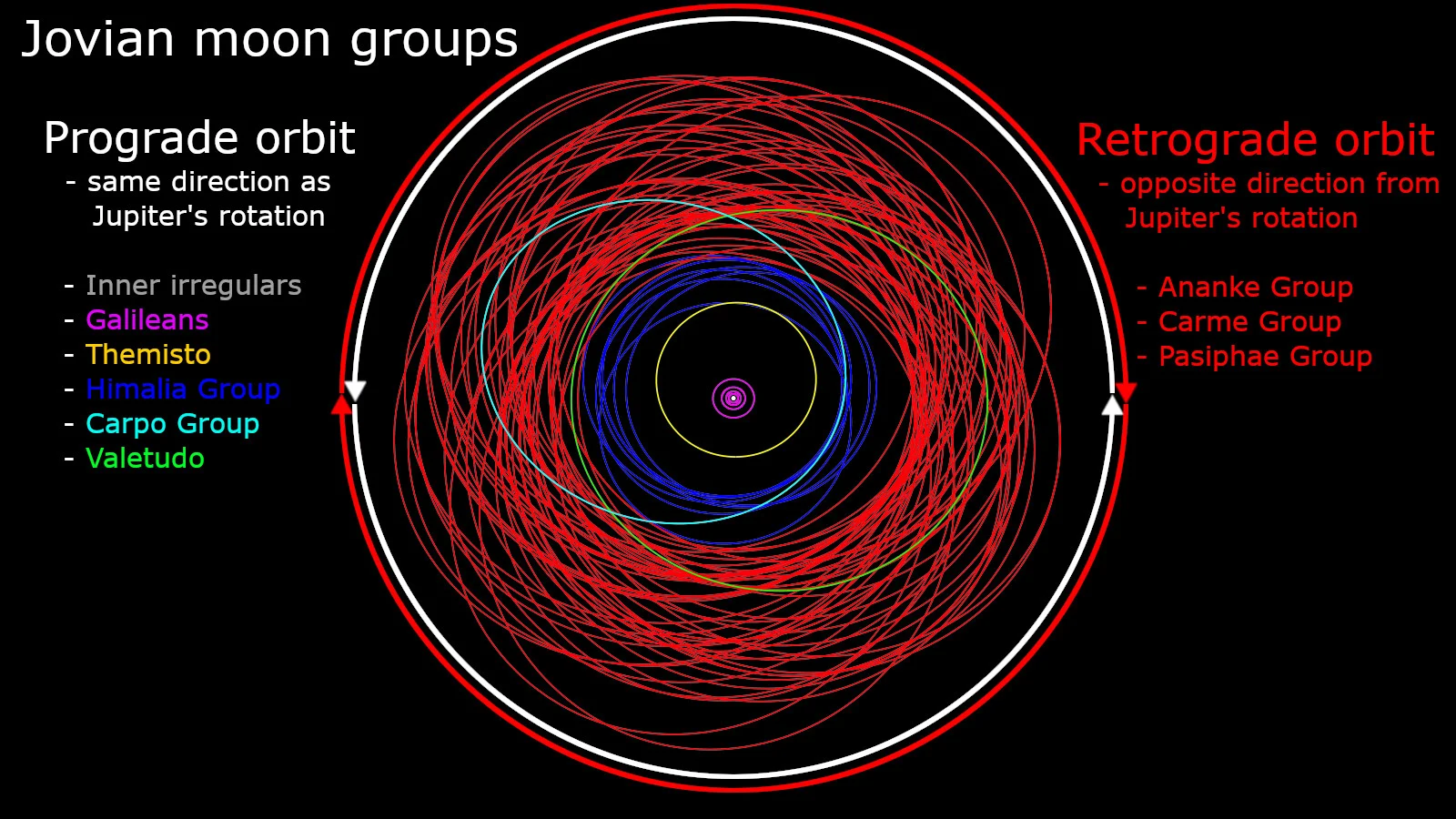
This diagram highlights the various groups of Jovian moons while illustrating the direction of their orbits - prograde or retrograde. Credit: Scott S. Shepard/Carnegie Science, labels by Scott Sutherland
The preliminary names of these moons denote them as the satellite of a planet (S), followed by the year of their discovery, the first letter of the name of the planet they orbit, and the order in which they were found that year. Thus, the Carme retrograde moon 'S/2016 J3' was the third moon of Jupiter spotted in 2016, even though it was confirmed and added to the Minor Planet Center's records in January of 2023.
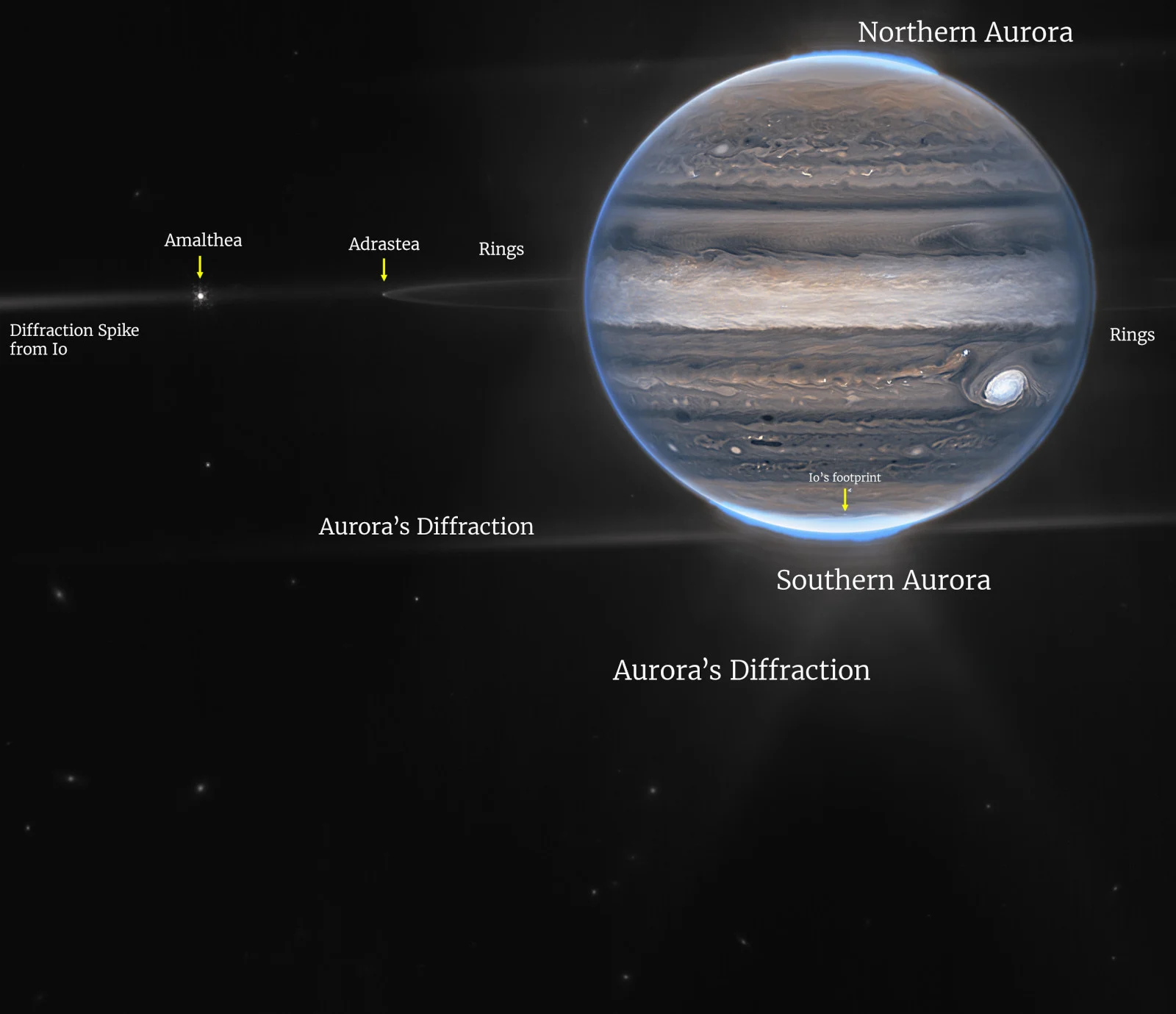
This view of Jupiter was captured by the James Webb Space Telescope in July 2022, revealing the intricate details of the gas giant's cloud bands, the bright auroras at its poles, the tenuous rings, and two of its inner moons — Amalthea and Adastrea. Credit: NASA, ESA, CSA, Jupiter ERS Team; image processing by Ricardo Hueso (UPV/EHU) and Judy Schmidt.
Although Jupiter is the current 'moon champion' of the solar system, if a similar search for small moons was done for Saturn, the ringed planet could dethrone Jupiter for good.
According to a study published by astronomers with the University of British Columbia in 2021, observations of Saturn with the Canada-France-Hawaii Telescope atop Mauna Kea turned up 120 objects that the researchers believe are "nearly certainly irregular moons."
Brett Gladman, one of the co-authors of that paper, told Sky & Telescope that if they counted all moons that were at least 3 km wide, "Saturn would have more moons than all the rest of the solar system."











